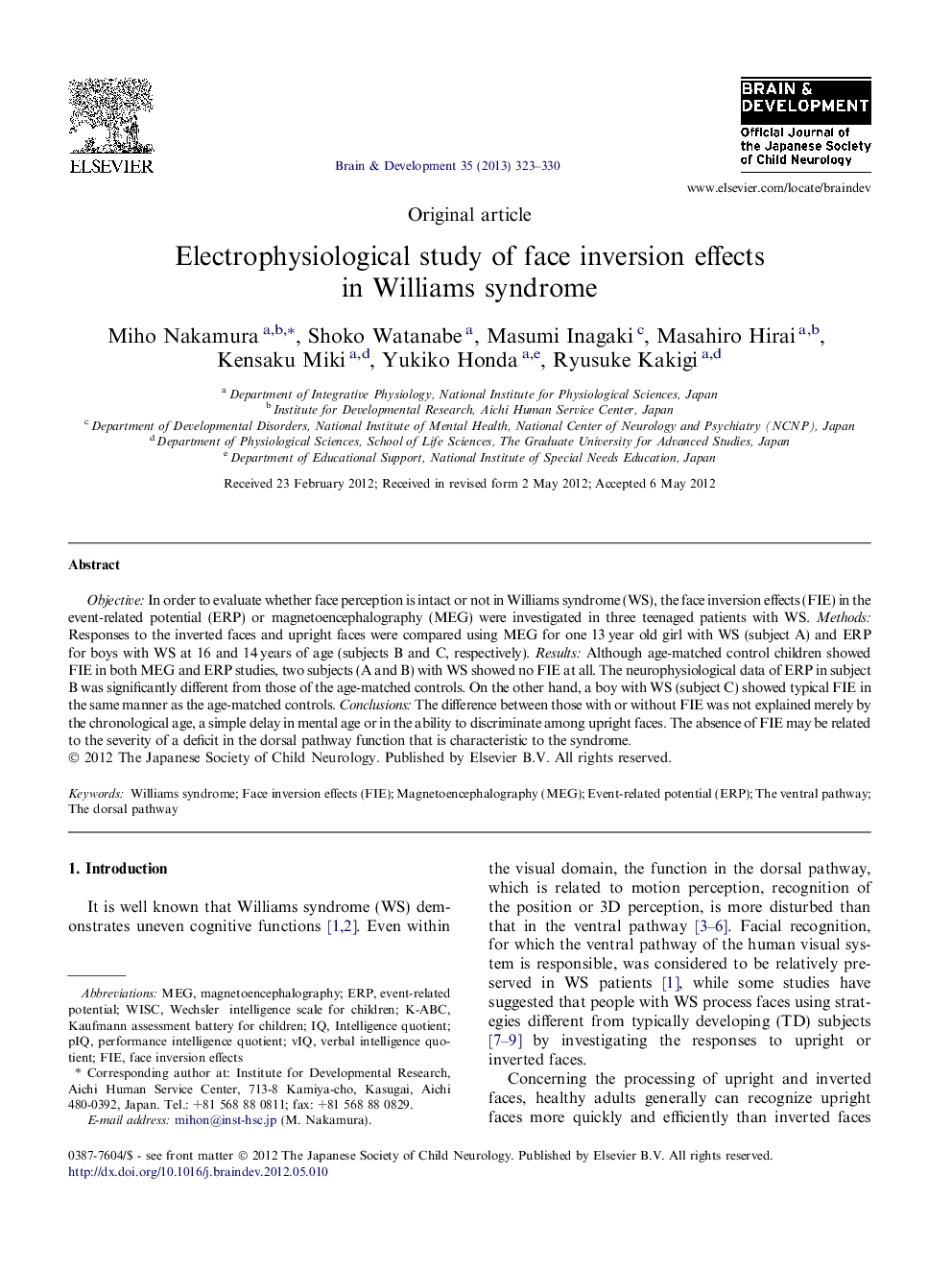| Article ID | Journal | Published Year | Pages | File Type |
|---|---|---|---|---|
| 3037195 | Brain and Development | 2013 | 8 Pages |
Objective: In order to evaluate whether face perception is intact or not in Williams syndrome (WS), the face inversion effects (FIE) in the event-related potential (ERP) or magnetoencephalography (MEG) were investigated in three teenaged patients with WS. Methods: Responses to the inverted faces and upright faces were compared using MEG for one 13 year old girl with WS (subject A) and ERP for boys with WS at 16 and 14 years of age (subjects B and C, respectively). Results: Although age-matched control children showed FIE in both MEG and ERP studies, two subjects (A and B) with WS showed no FIE at all. The neurophysiological data of ERP in subject B was significantly different from those of the age-matched controls. On the other hand, a boy with WS (subject C) showed typical FIE in the same manner as the age-matched controls. Conclusions: The difference between those with or without FIE was not explained merely by the chronological age, a simple delay in mental age or in the ability to discriminate among upright faces. The absence of FIE may be related to the severity of a deficit in the dorsal pathway function that is characteristic to the syndrome.
